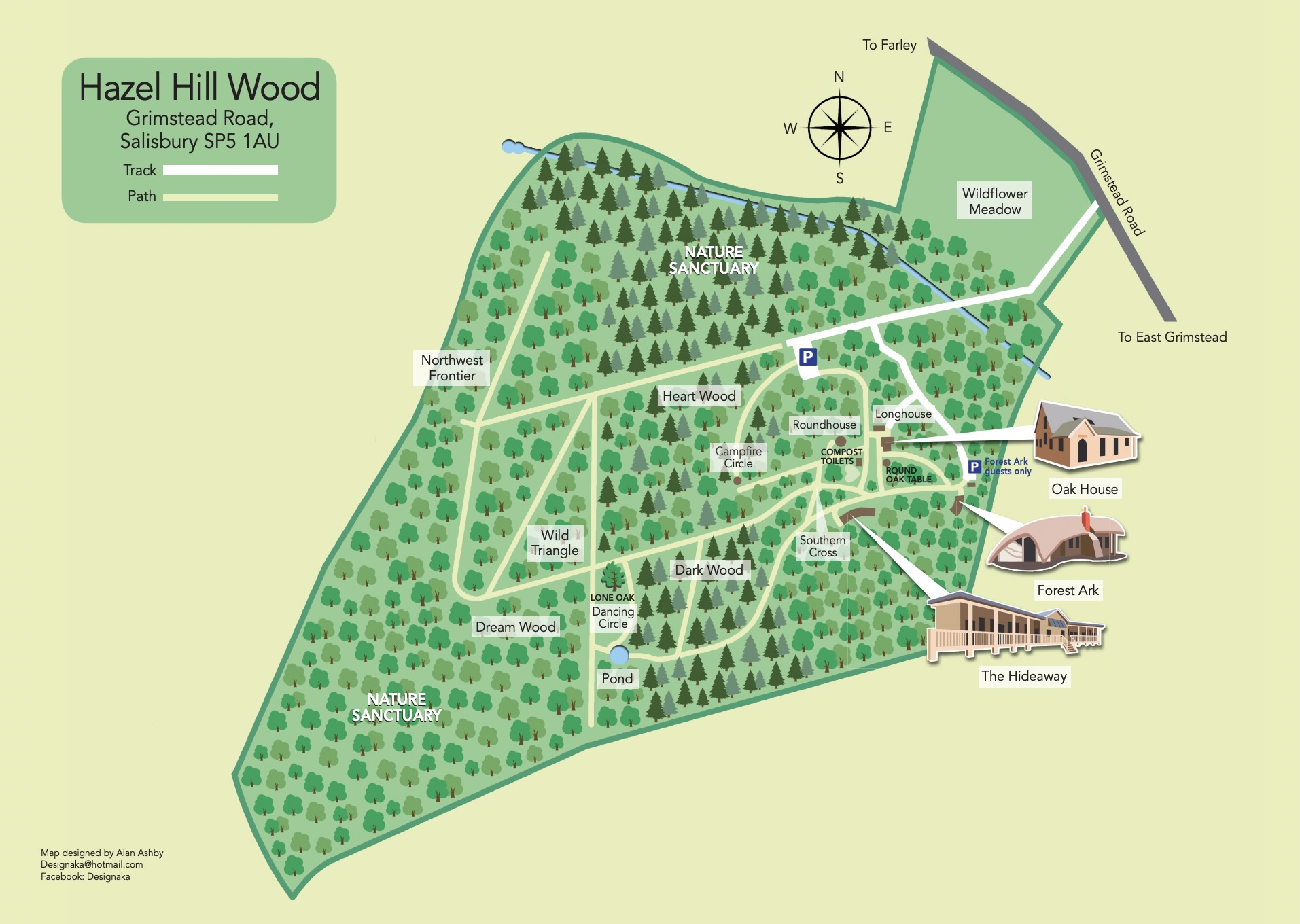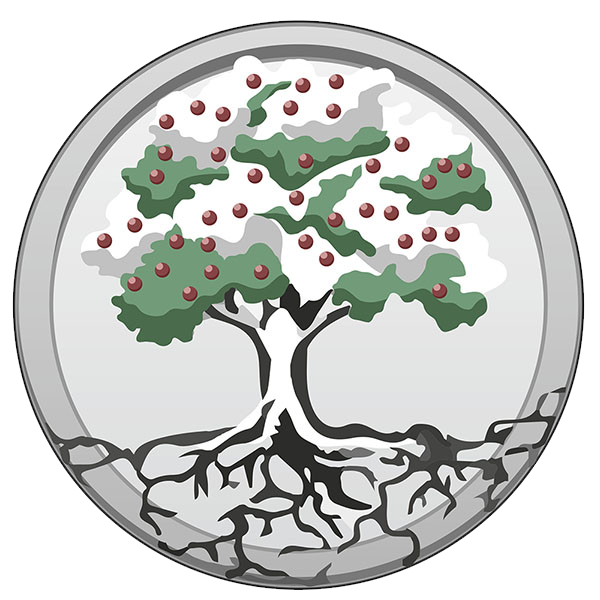Hazel Hill Wood covers 70 acres and is an ancient woodland site, meaning that the land has been wooded for centuries. Species like bluebell and wood spurge are evidence of this history. Hazel Hill Wood is now carefully managed as a conservation woodland and has been designated as a Local Wildlife Site. The variety of habitats and microhabitats support a high diversity of wildflowers, trees, animals and fungi – see below for more.
Maintaining these habitats requires ongoing practical conservation work, completed largely by volunteers. Find out more about our Volunteer Days and Conservation Weekends.

Woodland
Mature woodland makes up the majority of Hazel Hill Wood, with a mix of native and non-native tree species including oak, beech, hornbeam, Scots pine, Douglas fir and birch. Hazel and holly form the understory. Mature oak trees support hundreds of other species, including many invertebrates. Young trees are also important as they provide different habitat conditions, and will eventually replace the mature trees when they die. Deadwood is an important component of healthy woodland, with many species making their homes and feeding in or on it. This includes fallen trees and branches on the ground, as well as standing dead trees where it is safe to leave them.
Species that live in the woodland habitat at Hazel Hill Wood include amethyst deceiver fungus, tawny owl, roe deer, wood mouse, bluebell, wood sorrel, violet ground beetle and purple hairstreak butterfly.
Rides and glades
These are the open spaces within the wood that support the greatest species diversity and require active management. Rides are linear features, normally with a path in the middle, and glades are more circular in shape. The increased levels of sunlight mean more wildflower species can grow in these areas than under the shade of dense trees. At Hazel Hill Wood, we manage the rides and glades by cutting different areas each year and importantly raking up the cuttings. This keeps the nutrient levels low (as they are naturally), allowing more species to compete and coexist.
Species that live in the ride and glade habitats at Hazel Hill Wood include betony, devil’s bit scabious, grass snake, common lizard, white admiral butterfly, glow-worm, green woodpecker and common frog.
Pond and other wetlands
Wildlife needs water, and the Main Pond is a very special place at Hazel Hill Wood. A network of ditches and winter flooding provide more wetland habitat. Frogs actually prefer to lay their spawn in the areas that dry up over summer, where there are fewer predators around.
Species that live in the wetland habitats at Hazel Hill Wood include great crested newt, palmate newt, speckled yellow moth, broad-bodied chaser dragonfly, large red damselfly and bulrush. We get occasional visits from heron and kingfisher.
Hedgerow
Hedgerows around the edges of Hazel Hill Wood provide dense vegetation for birds and small mammals to nest in. They also form “corridors” for animals to move along, including bats which use them for navigation. We practice the traditional skill of hedge-laying at Hazel Hill Wood.
Species that live in the hedgerows of Hazel Hill Wood include bank vole, honeysuckle, greater stitchwort, blackbird, wren, common toad, orange tip butterfly and hazel leaf-roller beetle.
Meadow
On the right, as you turn into Hazel Hill Wood from the road is the Meadow. Sheep graze the Meadow over the winter, and a hay cut is taken in the summer – this management maintains it in good condition, allowing a variety of wildflowers to thrive, along with associated insects and their predators in turn. This meadow is really special because it is “unimproved”, meaning that it has never had things like fertilisers or pesticides applied.
Species that live in the Meadow at Hazel Hill Wood include common spotted orchid, bird’s foot trefoil, field wood-rush, marbled white butterfly, common carder bee, mole and fallow deer.
